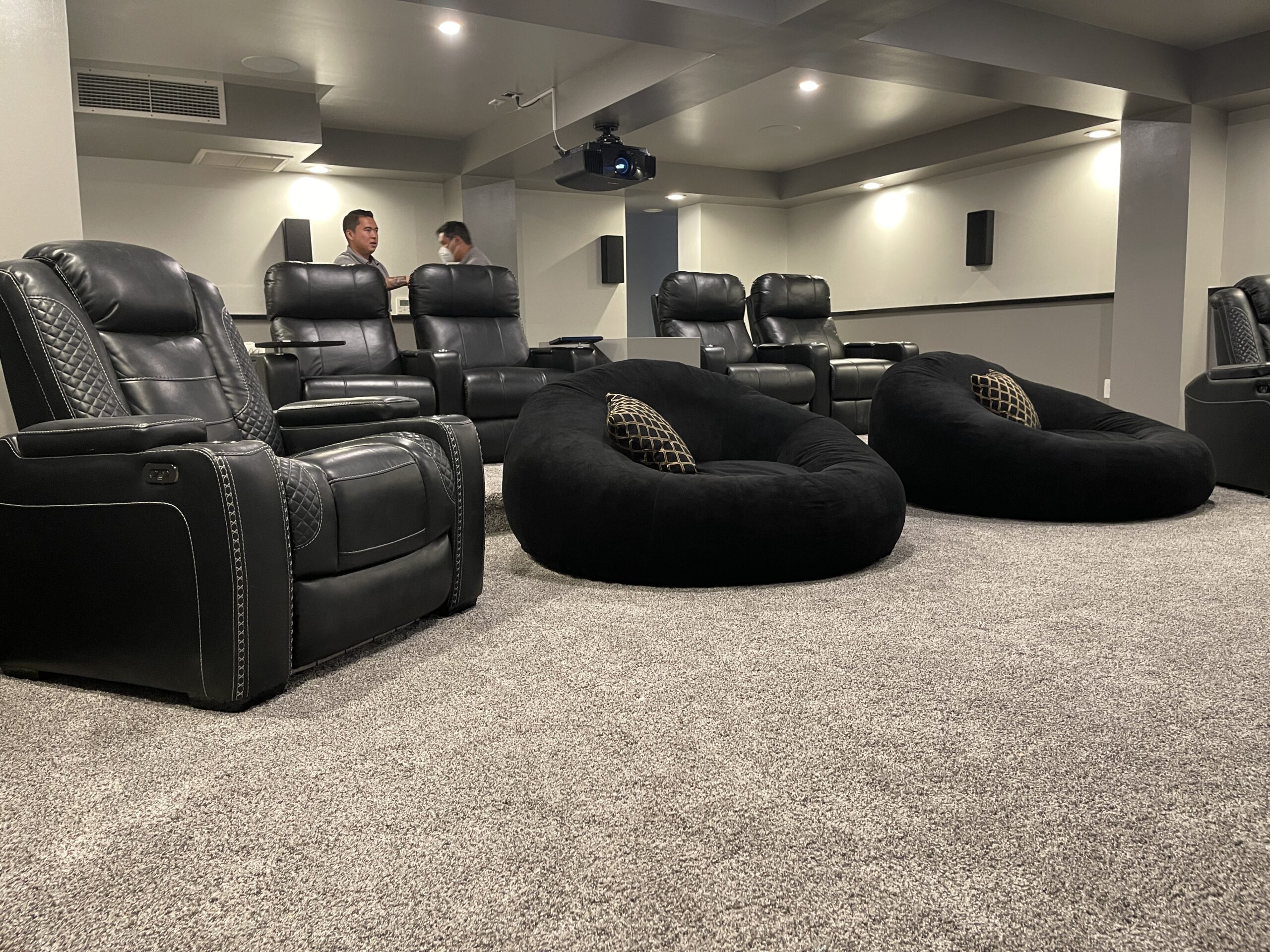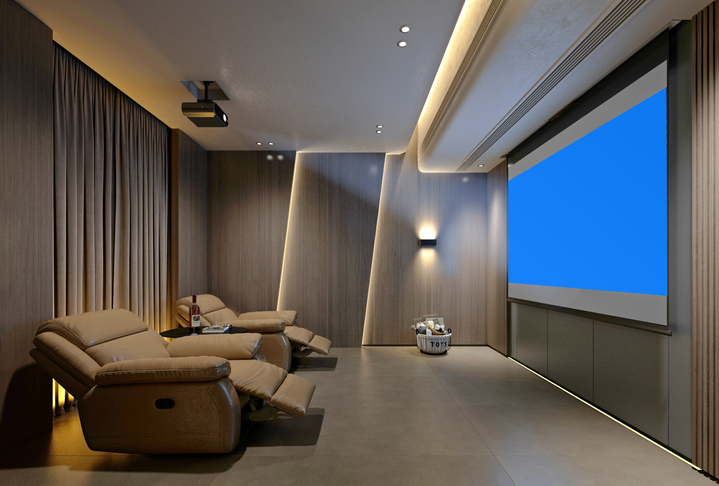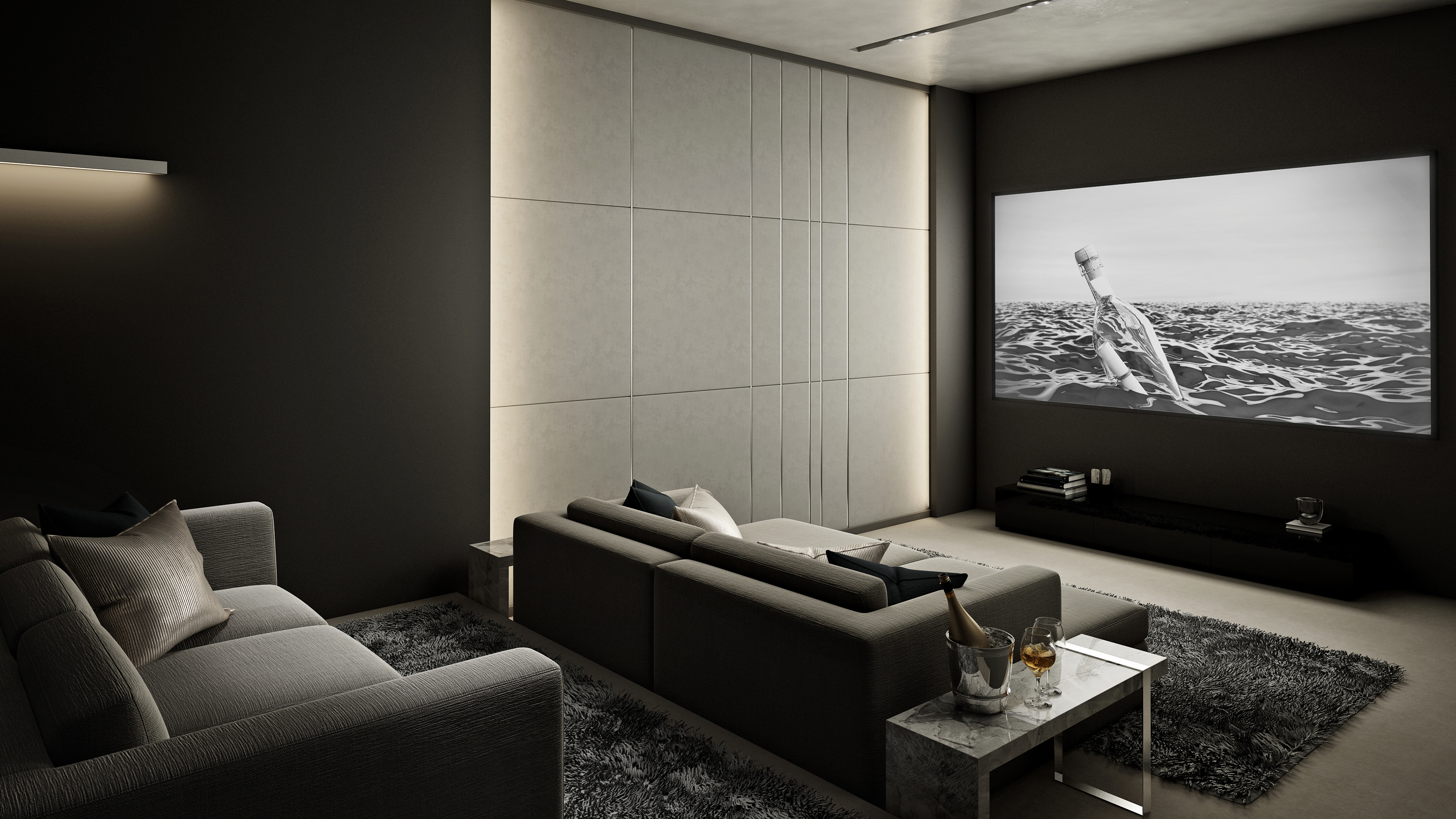Home Theater 101: Whatever You Required to Know for a Cinematic Experience in the house
Producing a home movie theater that rivals the motion picture experience of a business theater involves careful consideration of numerous parts, including display selection, stereo, and space design. Each component plays a pivotal duty in accomplishing the desired setting and functionality. Whether you are considering the ideal display size or the intricacies of surround sound, understanding these basics is vital. As we explore these essential parts, it becomes noticeable that the choices made can dramatically affect your total watching experience, leaving one to ponder exactly how these choices will shape your individual cinema.
Selecting the Right Screen
When setting up a home movie theater, selecting the right display can make or break the checking out experience - home theater tampa. The display serves as the centerpiece of your setup, affecting image high quality, seeing angles, and overall visual. Trick variables to take into consideration include screen dimension, type, and resolution
First, identify the ideal display dimension based upon your area dimensions and seating range. A general standard is to rest roughly 1.5 to 2.5 times the angled screen dimension for ideal viewing. Next off, select in between various display types, such as fixed-frame, motorized, or retractable screens, each offering unique benefits. Fixed-frame displays generally supply the most effective photo top quality, while motorized options enable versatility precede usage.
Resolution is another important aspect. For a genuinely immersive experience, take into consideration a screen designed for 4K and even 8K web content, guaranteeing intensity and clarity. Furthermore, take into consideration the display's gain, which affects illumination and contrast; a higher gain can improve brightness in well-lit areas, while a lower gain may be better for darker settings.
Selecting Sound Equipment
Audio devices is an essential component of any home cinema system, considerably improving the general watching experience. The option of audio gear can determine the depth, clarity, and immersion of sound, critical for developing a motion picture ambience.
When choosing audio devices, think about a border audio system, which typically includes a receiver, several speakers, and a subwoofer. A 5.1 or 7.1 channel system is suggested, where the first number represents the audio speakers and the second the subwoofer, offering an immersive soundscape. The receiver is the heart of the system, managing sound and video clip signals, and ought to sustain contemporary layouts like Dolby Atmos for an enhanced spatial experience.
Quality audio speakers are essential; seek designs that supply a well balanced noise profile with great bass action. Floor-standing speakers can produce richer audio, while bookshelf choices save room. Furthermore, take into consideration cordless choices for ease of installment, although wired systems usually supply premium performance.

Ideal Seating Arrangements
Producing an excellent home cinema experience pivots significantly on optimum seating setups. The plan of seats plays a crucial function in both comfort and viewing top quality, straight impacting the general cinematic experience.
First, consider the screen dimension and watching distance. An usual standard is to place seats at a distance about 1.5 to 2.5 times the angled dimension of the screen. This ensures an immersive experience without stressing the eyes.
Next, elevation is crucial. The back rows need to be greater than the front to prevent blockages if your seating is in a tiered format. For flat seats, guarantee that the front row is not also close to the screen, which everyone has a clear view.
Furthermore, consider the arrangement in regards to social dynamics. Team seating can enhance the public experience, while private seats might be chosen for personal viewing.

Finally, focus on comfort with ergonomic seating that sustains extended watching periods. Including reclining chairs or cushioned seats can substantially enhance the experience, making the home theater a recommended location for both amusement and relaxation.
Lighting and Atmosphere
Reliable lights and atmosphere are necessary components of a properly designed home theater, as they significantly affect the checking out experience. The appropriate illumination can boost the cinematic feel, while bad options can interfere with it. For optimum outcomes, consider a split lights approach that includes ambient, task, and accent lights.
Ambient lights gives basic illumination, guaranteeing that the area is not completely dark, which can stress the eyes. Dimmer switches are highly suggested, permitting for modifications based upon the material being seen. Job illumination, such as wall surface sconces or floor lamps, provides practical lighting for tasks like analysis or navigating the area without interfering with the overall environment.
Accent illumination can be used to highlight building attributes or produce prime focus, adding deepness and interest to the space. LED strip lights behind screens or along shelves can give a subtle radiance that boosts the aesthetic experience without frustrating the visitor.

Wiring and Installation Tips
A well-planned electrical wiring arrangement is essential for attaining optimum performance in your home theater system. Appropriate electrical wiring not just guarantees high-grade audio and video signals yet likewise improves the overall visual of your space. Begin by mapping out your design, determining where each part will be placed, including your display, audio speakers, and receiver.
When selecting cables, focus on high-grade, properly evaluated circuitry to minimize signal loss. HDMI wires should be made use of for video clip connections, while audio speaker cable ought to match the requirements of your speakers and amplifier. Choose in-wall rated he has a good point cords to follow safety and security requirements and maintain a tidy appearance.

Conclusion
In recap, developing a phenomenal home cinema experience needs careful factor to consider of different aspects, including display selection, audio devices, seating arrangements, lights, and wiring. By prioritizing these variables, a cinematic environment can be successfully duplicated, permitting for immersive seeing experiences that equal traditional movie theater setups.
Producing a home cinema that matches the cinematic experience of an industrial theater includes cautious factor to consider of multiple components, including screen option, audio systems, and room layout.When establishing up a home theater, selecting the right screen can make or damage the seeing experience. Next, pick in between different screen kinds, such as fixed-frame, motorized, or retracting screens, each offering distinct benefits. For a genuinely immersive experience, take into consideration a screen made for 4K or also 8K material, guaranteeing sharpness and clearness.In recap, producing an exceptional home movie theater experience needs careful consideration of numerous elements, including screen choice, audio devices, seating setups, illumination, and electrical wiring.